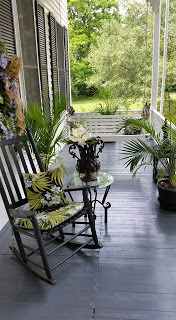Vicki Wilkerson's Blog, page 2
May 25, 2018
Southerners and Our British Roots
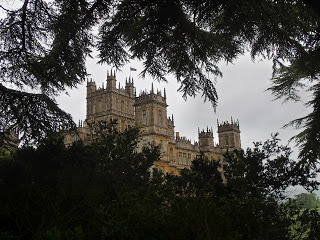 Highclere Castle values its gardens as much as its interior.Recently the royal wedding triggered a line of thought that has been traipsing through my mind for many years, and that is the close connections between Southerners and the British. Of course we know that the South was settled largely by the British. Many of the plantations of the South were originally land grants from the kings of England. But even if you cannot trace your family’s history back to its British roots, you can trace some of the South’s culture back to the United Kingdom and, thereby, explain some of our…tendencies.
Highclere Castle values its gardens as much as its interior.Recently the royal wedding triggered a line of thought that has been traipsing through my mind for many years, and that is the close connections between Southerners and the British. Of course we know that the South was settled largely by the British. Many of the plantations of the South were originally land grants from the kings of England. But even if you cannot trace your family’s history back to its British roots, you can trace some of the South’s culture back to the United Kingdom and, thereby, explain some of our…tendencies.When visiting the United Kingdom last year, I was taken aback by the ubiquitous use of the word “proper.” There seemed a proper way of doing everything—as exampled always by the rules of royalty. Though much of the South has taken on a more casual way of living, make no mistake about it, doing things the “proper” way is still the preferred way to many Southerners.
First of all, we (who notice) are like the British in our formal behaviors and manners. Dining, sitting, introductions, decorating—all have protocol. Though they were too gracious to call us out on our American dining habit of switching our forks and knives when we ate, we caught the way the British looked at us. Though we eat with our forks upturned in our right hands and don’t ascribe to pushing our peas with a knife onto an upside down fork in our left hand, we have our own standards for manners when dining and interacting with others, and like the British, we would never call people out for putting their elbows on the table or for eating and talking at the same time. There is simply a way to behave in “proper” society, and then there is…the improper way. Though our “rules” may differ slightly, propriety is the overarching theme for both cultures.
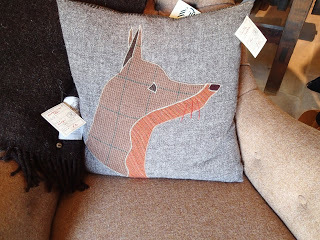 Proudly on display in the Cotswalds are wool pillows, throws and upholstered chairs, as well as wool clothing.
Proudly on display in the Cotswalds are wool pillows, throws and upholstered chairs, as well as wool clothing. Dressing for the British and for “proper” Southerners is a more formal affair, as well. The British love their tweed and wool from the Cotswalds, and we ladies from the South love our Lilly Pulitzer dresses, but what we both have in common is our united sense of dressing conservatively and well. We have a sense of what is proper to wear where and when. And though it’s not always adhered to, the rule in the South about not wearing white before Memorial Day and after Labor Day is still on the books for many in the old guard. Do I even need to point out our affinity for pearls? And nowhere is the similarity more evident than when dressing our children. We Southerners decorate our young children with smocked dresses, shorts suits and outfits made of heirloom stitching, and we slap bows the size of our little girl’s heads in their hair. We have a sense of fine fabrics, cardigans, and “proper” shoes for our little ones, as well. Just take a look at the royals—if you’re in doubt.
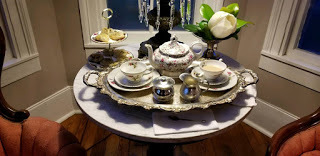 Serving tea is a religion in the South and in Great Britain.The foods and beverages we consume in the South have British roots, too, though some may not fully understand. Our meat puddings, like liver pudding and hog’s head cheese, have their beginnings in merry old England, where meat pies and puddings are staples. Have you ever eaten black pudding? In the South, we call it blood pudding. And do I even need to mention the connection we have with tea? It is an everyday staple for Southerners and the British. Though we have morphed our consumptions (sweet iced tea for us and cream tea for the UK), the unifying part is the tea.
Serving tea is a religion in the South and in Great Britain.The foods and beverages we consume in the South have British roots, too, though some may not fully understand. Our meat puddings, like liver pudding and hog’s head cheese, have their beginnings in merry old England, where meat pies and puddings are staples. Have you ever eaten black pudding? In the South, we call it blood pudding. And do I even need to mention the connection we have with tea? It is an everyday staple for Southerners and the British. Though we have morphed our consumptions (sweet iced tea for us and cream tea for the UK), the unifying part is the tea. Where do you think we get our love for hunting? That’s right, Great Britain! The list is long: Fishing is a religion. We look for occasions to pull out and use our best silver. We love our Southern gardens, Southern gates, and Southern architecture—all of which harken to the United Kingdom. Like the British, we go overboard naming our children with family names. Our churches and our faith are serious business. We love to decorate our homes with English antiques or antiques that embody British aesthetics. We name our houses, gardens and lands like the British-Middleton Place Gardens, Charles Towne Landing, and Drayton Hall, just to name a few.
I’m not saying that some of these influences cannot be linked to other regions of America, but the fact that the traditions are magnified tenfold in the South cannot be disputed. To further my point about our connections, I can direct you to my favorite Southern magazine, Garden and Gun, which is planning a trip for subscribers to Great Britain to celebrate all the things we have in common. The South’s execution of some of these traditions may be slightly different; however, our connection to the British is undeniable. Southerners have British roots that have grown deep and wide in this warm Southern soil!
Published on May 25, 2018 07:23
December 2, 2017
The Friendship in Fireflies and Lies
Fireflies and Lies, my latest release, is a story about a woman who is about to lose her family’s plantation and history—unless she can satisfy some antiquated will and trust her long-dead ancestor established during the Revolutionary War. In the story, readers become acquainted with the beauty of Jenna’s parcel of Southern land that borders an ancient river that took her brother’s life. The lies that surrounded that devastating event, the fireflies that had her mesmerized that evening and the friendship that helped her through her grief are a few of the motifs that run through this inspirational story of strength and healing.
In this fast-paced, disposable world, lasting friendships seem to be a casualty. Oh, you can find relationships that are built around a season, for example, you’re friends with the people in your neighborhood because they live on your block, or you’re friends with the other mothers from your son’s little league team, or you’re friends with your co-workers. But if you move, if your son quits little league, or if you lose your job, how many of those people will be your friends in a few short years?
Yes, many friendships fall away and some morph into the casual variety that are so prevalent these days. Few are friendships that last forever—are close forever—are special forever. Such is the bond that I have with my best friend, Joan, who inspired the friendship in this story.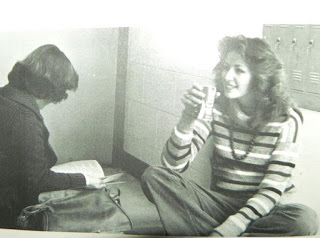 In high school, Joan studied. I did not.Joan and I became friends in middle school about forty-five years ago. Our friendship continued through high school; she was my maid of honor at my wedding, and she continues to be my best friend to this day. Though we went our separate ways physically in our early twenties, we stayed in touch through the busy years of raising our children, building our careers and beyond. We had few days together in those demanding times; however, as the years afforded more time together, we seized upon those opportunities, and now, we meet regularly, though we live in different states. Our friendship has endured and thrived because the foundation of our friendship had been built on bedrock.What is the bedrock of friendship, you ask? Well, I’ll tell you. It is loyalty. It is truth. It is honesty. It is love. It is worrying about one another’s health and happiness. It is defending one another. It is having the other’s back when she fails. In the bad times, friends cry together, and in the good times, they celebrate each other’s successes. I have wanted all the best for my friend all my life and have prayed for her many times without her even knowing. In Fireflies and Lies, Jenna, who is the heroine, and April, her best friend, have the kind of relationship that I’ve just described—close, fierce, supportive and unwavering. Though the events in the story are completely fictitious, the alliance between Jenna and April is not. It is a mirror of my friendship with Joan.Friendships that last a lifetime are rare, and I am blessed to have one. I wrote an entire page in my friend’s high school yearbook, recounting some of our antics, hard times and hopes, and I ended it with these prophetic words: “Joan, you and I are going to be friends until we turn gray.” We’ve accomplished that…and so much more. I love you, dear friend!
In high school, Joan studied. I did not.Joan and I became friends in middle school about forty-five years ago. Our friendship continued through high school; she was my maid of honor at my wedding, and she continues to be my best friend to this day. Though we went our separate ways physically in our early twenties, we stayed in touch through the busy years of raising our children, building our careers and beyond. We had few days together in those demanding times; however, as the years afforded more time together, we seized upon those opportunities, and now, we meet regularly, though we live in different states. Our friendship has endured and thrived because the foundation of our friendship had been built on bedrock.What is the bedrock of friendship, you ask? Well, I’ll tell you. It is loyalty. It is truth. It is honesty. It is love. It is worrying about one another’s health and happiness. It is defending one another. It is having the other’s back when she fails. In the bad times, friends cry together, and in the good times, they celebrate each other’s successes. I have wanted all the best for my friend all my life and have prayed for her many times without her even knowing. In Fireflies and Lies, Jenna, who is the heroine, and April, her best friend, have the kind of relationship that I’ve just described—close, fierce, supportive and unwavering. Though the events in the story are completely fictitious, the alliance between Jenna and April is not. It is a mirror of my friendship with Joan.Friendships that last a lifetime are rare, and I am blessed to have one. I wrote an entire page in my friend’s high school yearbook, recounting some of our antics, hard times and hopes, and I ended it with these prophetic words: “Joan, you and I are going to be friends until we turn gray.” We’ve accomplished that…and so much more. I love you, dear friend!
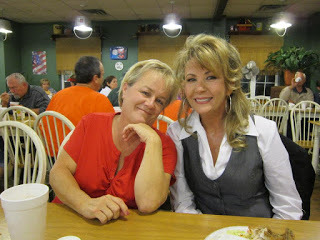 Joan and I enjoy some time together before one of our high school reunions.
Joan and I enjoy some time together before one of our high school reunions.
In this fast-paced, disposable world, lasting friendships seem to be a casualty. Oh, you can find relationships that are built around a season, for example, you’re friends with the people in your neighborhood because they live on your block, or you’re friends with the other mothers from your son’s little league team, or you’re friends with your co-workers. But if you move, if your son quits little league, or if you lose your job, how many of those people will be your friends in a few short years?
Yes, many friendships fall away and some morph into the casual variety that are so prevalent these days. Few are friendships that last forever—are close forever—are special forever. Such is the bond that I have with my best friend, Joan, who inspired the friendship in this story.
 In high school, Joan studied. I did not.Joan and I became friends in middle school about forty-five years ago. Our friendship continued through high school; she was my maid of honor at my wedding, and she continues to be my best friend to this day. Though we went our separate ways physically in our early twenties, we stayed in touch through the busy years of raising our children, building our careers and beyond. We had few days together in those demanding times; however, as the years afforded more time together, we seized upon those opportunities, and now, we meet regularly, though we live in different states. Our friendship has endured and thrived because the foundation of our friendship had been built on bedrock.What is the bedrock of friendship, you ask? Well, I’ll tell you. It is loyalty. It is truth. It is honesty. It is love. It is worrying about one another’s health and happiness. It is defending one another. It is having the other’s back when she fails. In the bad times, friends cry together, and in the good times, they celebrate each other’s successes. I have wanted all the best for my friend all my life and have prayed for her many times without her even knowing. In Fireflies and Lies, Jenna, who is the heroine, and April, her best friend, have the kind of relationship that I’ve just described—close, fierce, supportive and unwavering. Though the events in the story are completely fictitious, the alliance between Jenna and April is not. It is a mirror of my friendship with Joan.Friendships that last a lifetime are rare, and I am blessed to have one. I wrote an entire page in my friend’s high school yearbook, recounting some of our antics, hard times and hopes, and I ended it with these prophetic words: “Joan, you and I are going to be friends until we turn gray.” We’ve accomplished that…and so much more. I love you, dear friend!
In high school, Joan studied. I did not.Joan and I became friends in middle school about forty-five years ago. Our friendship continued through high school; she was my maid of honor at my wedding, and she continues to be my best friend to this day. Though we went our separate ways physically in our early twenties, we stayed in touch through the busy years of raising our children, building our careers and beyond. We had few days together in those demanding times; however, as the years afforded more time together, we seized upon those opportunities, and now, we meet regularly, though we live in different states. Our friendship has endured and thrived because the foundation of our friendship had been built on bedrock.What is the bedrock of friendship, you ask? Well, I’ll tell you. It is loyalty. It is truth. It is honesty. It is love. It is worrying about one another’s health and happiness. It is defending one another. It is having the other’s back when she fails. In the bad times, friends cry together, and in the good times, they celebrate each other’s successes. I have wanted all the best for my friend all my life and have prayed for her many times without her even knowing. In Fireflies and Lies, Jenna, who is the heroine, and April, her best friend, have the kind of relationship that I’ve just described—close, fierce, supportive and unwavering. Though the events in the story are completely fictitious, the alliance between Jenna and April is not. It is a mirror of my friendship with Joan.Friendships that last a lifetime are rare, and I am blessed to have one. I wrote an entire page in my friend’s high school yearbook, recounting some of our antics, hard times and hopes, and I ended it with these prophetic words: “Joan, you and I are going to be friends until we turn gray.” We’ve accomplished that…and so much more. I love you, dear friend! Joan and I enjoy some time together before one of our high school reunions.
Joan and I enjoy some time together before one of our high school reunions.
Published on December 02, 2017 14:14
July 6, 2017
The Camp Meeting in Swamps and Soirees
The Camp Meeting in Swamps and Soirees
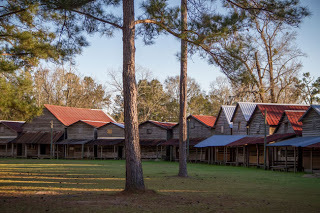 One of the unifying images and settings in
Swamps and Soirees
is the idea of Camp Meeting. Camp Meetings were historical gatherings that began in the late 1700’s during the Great Awakening. Francis Asbury, one of the founders of Methodism, travelled and preached at these as hoc campgrounds as residents in the area gathered for a week-long revival of Christianity.
One of the unifying images and settings in
Swamps and Soirees
is the idea of Camp Meeting. Camp Meetings were historical gatherings that began in the late 1700’s during the Great Awakening. Francis Asbury, one of the founders of Methodism, travelled and preached at these as hoc campgrounds as residents in the area gathered for a week-long revival of Christianity. Through the years, the camp meetings morphed into something more than their strictly religious beginnings. At the inception, tents were erected for local residents to sleep in and rest between the meetings. Later, crude wooden structures were built to replace the fabric tents. These wooden structures were built with only a couple of feet between them, had dirt floors, an open floor plan and a loft for sleeping. Porches extended from the fronts with primitive benches under them, which encouraged folk to sit outside to socialize with their neighbors. Some families have owned these cabins for generations, passing them down to successive generations.
Initially, these “revivals” could occur at most any time of year; however, as they became annual gatherings, the meetings were organized around the harvest in the fall when campers could enjoy the fruits (and vegetables and meats) of their labors. There was always a pig or two sacrificed for the occasion. Many families even hired cooks that had worked the camp meetings for practically their whole lives. Camp meetings are known for their amazing Southern foods.
At the center of the circle of “tents” an open-sided wooden Tabernacle with simple benches became the central gathering place in the evening for services. This Tabernacle was physically and symbolically the centralized reason for fellowship and a revival (or rebirth or an awakening) of faith for the entire community.
A fictitious camp meeting is a unifying motif in Swamps and Soirees . Through the novel, the characters look forward to the meeting, plan for the camp, and enjoy friends and family during the revival. It is also where some very important “events” happen that change the outcome of this inspirational story. I hope you enjoy learning about camp meeting as you enjoy this funny, inspirational story of hope, love and courage!
Published on July 06, 2017 14:52
June 26, 2017
Beauty...In a Swamp?
Beauty… In a Swamp?
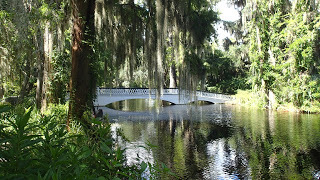 After writing Swamps and Soirees, readers have asked multiple times, “Why did you initially decide to write about a swamp?” Well, there are several answers to that question. Some of the obvious answers involve my proximity to swamps. I was born in a small town that is bordered by a swamp. As a child, I remember my grandparents taking me there frequently to fish or simply for visits to the peculiar wetlands. From my family’s lake house, we accessed the many cypress forests and swamps that bordered the lake upon which we played. And now, when I leave the isolation of my home to go nearly anywhere, I must pass through swampy environs. So, my exposure…my immersion—if you will—is complete, and in them, I find great beauty. But the reason I believe I get asked that question is that many people believe they are filled with great dangers—and they can be—in many ways, but there is also a pristine beauty that pervades those dangers.
After writing Swamps and Soirees, readers have asked multiple times, “Why did you initially decide to write about a swamp?” Well, there are several answers to that question. Some of the obvious answers involve my proximity to swamps. I was born in a small town that is bordered by a swamp. As a child, I remember my grandparents taking me there frequently to fish or simply for visits to the peculiar wetlands. From my family’s lake house, we accessed the many cypress forests and swamps that bordered the lake upon which we played. And now, when I leave the isolation of my home to go nearly anywhere, I must pass through swampy environs. So, my exposure…my immersion—if you will—is complete, and in them, I find great beauty. But the reason I believe I get asked that question is that many people believe they are filled with great dangers—and they can be—in many ways, but there is also a pristine beauty that pervades those dangers.If you’ve never been fortunate enough to spend time in a swamp, then you may be unaware of the enchantments they hold. Overhead, the sun gets blocked out by old oaks and tupelo trees, dripping with lacy, gray Spanish moss. Growing from watery foundations are ancient cypress trees with knees that reach up around them, seemingly gasping for breaths. Water lilies and exotic Southern flowers spring from the depths of the black waters below. Shadows and sunshine battle beneath the green canopy above in an attempt to win a war that is unnecessary because both are needed.
And if you’re a wildlife lover and you’ve never been to a swamp, well, you’ve missed the proverbial boat, then, now haven’t you? The first thing that might come to mind is that they are filled with all manner of ancient, dangerous beasts—the first on that list, of course, being the American alligator. And yes, swamps are filled with them…and snakes, and turtles, and eels, and fish, and leeches, and anything else that might find a home under the dark waters. Over the boggy lands around the waters, one can find bears, and boars, and deer, and raccoons, and squirrels, large, wild cats and foxes. With all the wildlife in the waters and on the soggy land surrounding them, we may forget to look up to see the amazing array of bird life—and it is amazing! In addition to the herons and egrets, many other species of birds—too numerous to list—find their home—their refuge—in the swamps that surround me.
Lest I forget, let me mention the history that still echoes though the old trees that emerge through the black water swamps. Our nation’s very freedom and independence was won on these watery battlegrounds. Ever hear of Francis Marion, The Swamp Fox? That whole episode is a book unto itself!
People come from lands far and near to visit our beautiful swamps—to touch their ancient, primordial beauty. Beidler Forest in Dorchester County, South Carolina, has miles of elevated trails through Cypress Swamp. Magnolia Plantation and Gardens has an entire area set aside to preserve these unique wetlands. In Moncks Corner, Cypress Gardens provide beautiful azalea gardens, filled with native species of flowers, trees and plants, interspersed among a Lowcountry swamp in Berkeley County, just outside Charleston, South Carolina. Sparkleberry Swamp, on the upper end of Lake Marion, offers a most picturesque, natural landscape of what a raw, untouched, undeveloped swamp is. Congaree National Forest has numerous canoe trails through its swamplands, and I have only begun to touch the many beautiful swamps that can be found in South Carolina. I shudder to think of the many outside my immediate area!
So, if you’re still asking why set a novel in a swamp, I would have to simply answer that swamps are filled with dark, danger and beguiling beauty, history and myth, and some of the people who live in and around them are unique in their character and appreciation of these special places. Swamps are the perfect places to set a novel about how peace and courage collide.
Published on June 26, 2017 03:35
April 17, 2017
Jane Austen and Her Southern Sister


What does Jane Austen have to do with the Deep South? Well, for me, everything! You see, I write Southern women’s fiction with romantic elements. What did Jane Austen write? British women’s fiction with romantic elements.
I fell in love with Austen’s writing many years ago when I was in college, studying to be an English teacher. Well, of course, I wished to teach her novels to the seniors in my British Literature class, and then it was only natural to see her show up again when I retired to write. You see, Jane and I have similar interests. We both write about societies and cultures that wish for its members to…conform…and the heroines who wish to push back on those rigid walls to make a way for themselves to be the individuals that they truly are underneath the facades.
Jane and I concern ourselves with the stories of women, primarily showcasing the friendships and ties women have with their girlfriends and family members. The men in those women’s lives show up, but they are not the stars!
Jane and I love the little things in life. We write about the concerns of an ordinary day for our characters. For Jane, it was “tucking lace” on her sisters’ dresses, “taking a turn” on the dance floor, and finding suitable matches for her friends. For me, it is wearing the right clothes to an event, sharing Southern food with friends and family, and finding success in a career. Neither of us desire big explosions, murders, car chases or improprieties in our novels. They are stories that are slices of our contemporary lives.
Austen's use of biting irony, humor, realism and social commentary are extremely similar to mine—only I apply my wit and wisdom to the South, and she applies hers to England. We both love to slap silly, pretentious characters around and laud the ladies who work hard at being good, solid souls who simultaneously break social barriers while maintaining the greater collective good. Even the titles we use echo one another’s. Hers are Pride and Prejudice, Sense and Sensibility, Love and Friendship, and mine are Bikers and Pearls, Sweet Tea and Time (and coming soon will be Swamps and Soirees and Fireflies and Lies). But don’t place us in a title category because we both break that, as well.
The last similarity is also our biggest difference, and that is our respective culture’s treatment of tea. The British place enormous significance on their tea, but it is served hot (and many times with cream). The South reveres its use of tea, but it is always sweet and iced! So, as I have so clearly explained, Jane and I are sisters in the same writing sorority!
Published on April 17, 2017 17:25
March 3, 2017
Southern Front Porches
My Southern Porch
Southern Porches…
Ahhh… What comes to mind when I think of Southern porches is a great, big…exhale. Porches in the South are magical; they are where people go to breathe—to let go their troubles by swinging in a porch swing or rocking in a rocker. One can rock and swing and release the troubles of the day. Porches are where people watch the world pass by on the street—to warm up…or to cool down. Passersby might seem to be in a hurry, but people on a porch are there to…rest…and watch…and release.
Southern porches are extensions of Southern homes. Most have a few necessary (and sometimes unnecessary) items on them, like chairs, tables, lamps, plants, rugs, wreaths, decorations and more. They can be of the hoity-toity variety with fancy pillows and trays of fine silver serving pieces…or of the…less refined variety that one can sometimes find in rural areas of the South, replete with old benches, grills and a coolers that are filled with beer. No matter the decorating nuances, the same thing happens on most Southern porches. Life there is spent relaxed and easy. It is spent entertaining family and friends. And most times, you can find a few glasses of sweet iced tea, lemonade or—as I sometimes prefer with my girlfriends—wine. Sipping a beverage on an old porch is a Southern rite of passage, an act of friendship, and a way of telling those who visit, “You are welcome!”
My own introduction to the graces and hospitality of Southern porches happened at my grandparents’ home. The porch was where my grandparents, parents, aunts, uncles, cousins and friends hung out and talked and caught up. As a child, I played in the yard under the protection of the adults rocking and watching over me. The porch was almost a symbol of security. If I became frightened of anything, it was to where I ran. The rails were like arms that surrounded me and kept out the dangers of the yard…and the world.
It was on an old front porch that I learned the art of storytelling. My grandfather spent enormous amounts of time, telling me tales—sometimes the same ones over and over. It was from him that I learned the ebb and flow of stories, the way to hook the listener (or reader). And now that I am an author, front porches figure prominently in my novels—as settings and as symbols.
If you haven’t relaxed on a Southern porch in a while (or ever…if you are of the Northern variety), do yourself a favor and find someone who would be happy to host you for a few hours on their front porch. Sit a spell and watch the world and your worries pass you by and experience some Southern magic.
Happy rocking, y’all!
Published on March 03, 2017 15:30
February 13, 2017
Sweet Tea and Time

I have always loved sweet iced tea! In the South, it has meaning beyond just merely being a refreshing beverage. Here, where time slows down, it is a type of Southern communion, shared with friends and family dating back to its early days when first planted in my hometown of Summerville, South Carolina. In fact, Summerville has an entire festival proclaiming that little piece of history—The Sweet Tea Festival!
Sweet Tea is an offering, of sorts, to friends, family, and even strangers when they visit. It denotes hospitality and signals that the visitor is welcome. It says, “We have something in common.” It says, “I know your kind of people.” For some Southern ladies, it is a bit of an insult to turn down their kind offering of tea. I’ve seen my own mother become offended because someone watered down her sweet tea. In the South, we drink each other’s sweet tea as is…without complaint. It’s just good manners—like our mommas taught us.
My latest novel, available now on Amazon, SWEET TEA AND TIME, is a book from my Summerbrook Series that explores the ties among hospitality, comfort food, sweet tea and an accidental romance in a small, Southern town. The book follows the disappointments of a young woman who wants to protect her aging grandmother, who gives away her sweet tea to all she meets. In many instances in the story, the motif of sweet tea can be exchanged with the motif of time. If one has time for sweet tea, one has time for people.
I used the idea of sweet tea because it is so important to Southerners. They even note in which local restaurants they can find a suitable version of grandma’s homemade sweet tea, and they’ll sometimes make their dining choices accordingly. It’s that serious, people!
Though not officially condoned, sometimes, condiments are added to our favorite amber-colored drink to change up the monotony of the ubiquitous drink. People have added lemon and mint for ages, but a new favorite is emerging, as well—peach iced tea. I’ve seen a number of other versions, as well, like ginger sweet tea, strawberry sweet tea and black currant sweet tea. But those are anomalies and would get you a very strange look from most Southerners who prefer the beverage in its purest form—nothing but brewed tea and sugar!
The cooling beverage can be found in restaurants all across the South, but don’t look for the sweet nectar in Yankee territory. They’ll look at you quizzically and offer their “unsweetened” version. But don’t order it because if you don’t add the sugar to the warm brew, it’s just not the same.
Sweet tea is best sipped slowly a front porch with family and friends, so brew yourself up a big gallon of Southern hospitality, find a person you want to share some time with, sit on that front porch rocker and let a lazy afternoon slip away!
Published on February 13, 2017 10:42
August 5, 2016
The Garden
My Garden When azaleas bloomed and my liquid youth appeared bottomless, The path in the garden was meandering and endless. I sang and traipsed about the sundial, ignoring shadows and rays. And when the scented melody from magnolia flowers crooned common notes, My path became paved and straight. I built necessary bridges and garden gates and was imprisoned by their exacting beauty. But when the air turned crisp, the trail became narrowed by unpruned shrubs And rough with rising roots. Littered with leaves, needles and withered blooms, my walk grew labored and long. Now, the cold encases the thick evergreens that tower above me, And I struggle to make my unmarked way through a foreign, unforgiving forest. But it was my garden, my path, my walk…my way, And as my way grows dim and uncertain, I realize that I wouldn’t change a step.--Vicki Wilkerson
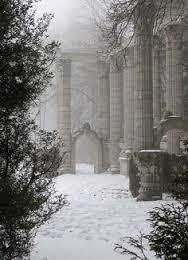

Published on August 05, 2016 11:56
November 23, 2015
Speaking of Southern...Food
Speaking of Southern...Food

Good Southern writers know how to easily evoke a Southern atmosphere in their novels. Just use food. Not just any food, though—authentic Southern food. At the mere mention of grits, cornbread and collard greens, you know what you’re reading is set in the South—or you have a character longing to be there. Certain foods are synonymous with the area below the Mason-Dixon Line. But why? Well, much is geographic fertility. For example, Georgia and South Carolina peaches are the sweetest available because of the soil. Our former president, Jimmy Carter, made Georgia peanuts famous because of his farm (and if you’re in the South, you’ve got to boil them there peanuts). To taste a region of the South, gather your pecans in Mississippi, grind up some sugar cane from Louisiana, bake up some sweet potatoes from Alabama, or shuck a few ears of sweet, Southern corn from North Carolina. Many of our foods have an African-American influence because of the plantations that dotted the Southern landscape. It is where we get okra, and thank goodness for okra soup and fried okra and okra pilau! Black-eyed peas and rice were staples on large plantations and on Southern tables today. Benne seeds and sorghum were used in many dishes, and melons were a perfect treat in the relentless Southern heat. All have roots in African heritage and soil.But by far the most influential component to Southern foods is family. Families passed down their recipes like they were passing down the crown jewels. Try to get your hands on some families’ prized fruitcake recipes or their barbecue recipes, and you’ll get your hand chopped off! Many Southern families identify themselves with their unique recipes for the foods all Southerners enjoy. For some, their recipes make their families special—and they don’t give away their “specialness” easily. In my family, my grandmother made a mean red velvet cake, and my mom cooks some awesome fried chicken—amongst many other amazing things—especially her red rice and chicken and dumpling soup (which I have desecrated—according to Mother—by deboning and shredding the chicken). The list of my family favorites goes on forever, and I am proud that we are a family who shares recipes. I know a family who keeps their shrimp and grits recipe under lock and key, an in-law that will NOT share her cookie recipe with me, even though I hinted and asked for years, until I gave up hope. I also have a favorite uncle who will not give up his barbecue sauce recipe—except to family, and we are sworn to secrecy on that one! Whether Southerners share or not, it’s all good, because even if they don’t share their recipes, they always share their food. Bon appetit, and happy Thanksgiving, y’all!

Good Southern writers know how to easily evoke a Southern atmosphere in their novels. Just use food. Not just any food, though—authentic Southern food. At the mere mention of grits, cornbread and collard greens, you know what you’re reading is set in the South—or you have a character longing to be there. Certain foods are synonymous with the area below the Mason-Dixon Line. But why? Well, much is geographic fertility. For example, Georgia and South Carolina peaches are the sweetest available because of the soil. Our former president, Jimmy Carter, made Georgia peanuts famous because of his farm (and if you’re in the South, you’ve got to boil them there peanuts). To taste a region of the South, gather your pecans in Mississippi, grind up some sugar cane from Louisiana, bake up some sweet potatoes from Alabama, or shuck a few ears of sweet, Southern corn from North Carolina. Many of our foods have an African-American influence because of the plantations that dotted the Southern landscape. It is where we get okra, and thank goodness for okra soup and fried okra and okra pilau! Black-eyed peas and rice were staples on large plantations and on Southern tables today. Benne seeds and sorghum were used in many dishes, and melons were a perfect treat in the relentless Southern heat. All have roots in African heritage and soil.But by far the most influential component to Southern foods is family. Families passed down their recipes like they were passing down the crown jewels. Try to get your hands on some families’ prized fruitcake recipes or their barbecue recipes, and you’ll get your hand chopped off! Many Southern families identify themselves with their unique recipes for the foods all Southerners enjoy. For some, their recipes make their families special—and they don’t give away their “specialness” easily. In my family, my grandmother made a mean red velvet cake, and my mom cooks some awesome fried chicken—amongst many other amazing things—especially her red rice and chicken and dumpling soup (which I have desecrated—according to Mother—by deboning and shredding the chicken). The list of my family favorites goes on forever, and I am proud that we are a family who shares recipes. I know a family who keeps their shrimp and grits recipe under lock and key, an in-law that will NOT share her cookie recipe with me, even though I hinted and asked for years, until I gave up hope. I also have a favorite uncle who will not give up his barbecue sauce recipe—except to family, and we are sworn to secrecy on that one! Whether Southerners share or not, it’s all good, because even if they don’t share their recipes, they always share their food. Bon appetit, and happy Thanksgiving, y’all!
Published on November 23, 2015 15:54
June 17, 2015
A Parable Let’s pretend…I’m an artist. Let’s say Michelan...
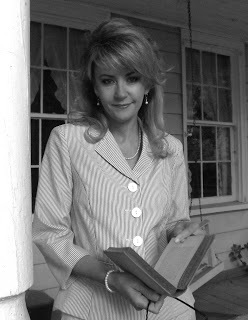 A Parable
A Parable Let’s pretend…I’m an artist. Let’s say Michelangelo. And I love my art SO much that I want to share it with others. I decide to inspire young people, so I invite them into my studio. I’m on fire and those kids are falling in love with art, too! I see interest and appreciation and promise! I spend twelve hours a day fueling their excitement, and I even spend much of my own money to encourage them. I’ve found my calling beyond myself—my calling for humanity!Then, the town officials get involved because there is a lot of buzz about what I’m doing. They create a…Department of Art. There are lots of highly-paid officials on the payroll. And, of course, they must DO something to justify their fat salaries. So, they come into my studio to observe me. They make me write down absolutely every little thing I say and do—how many brushes I use, what paintings I’m showing them, why I’m telling them this or that. They start giving me all these rules and regulations that really have nothing to do with the art in my studio, but I follow their rules because I’m fueled by the excitement from my students. My twelve hours of passionately inspiring my little artists turn into ten hours of inspiration and two hours of tedium. I can deal with that. Then seven hours of passion are followed by five hours of tedium. I’m tired. Finally, half my time is spent on paperwork and plans and codes and reports. I still muster the excitement for those six hours of each day, but it begins to wear down my artist’s soul.With great regret, I turn in my resignation.Moral of the Day: Great teachers quit or change professions every day and it has nothing to do with their precious students or doing the thing they love to do—which is to teach.Now, Vicki will get off her high horse because Vicki has gotten something off her chest…for today.I have turned my love of teaching literature and writing into writing and creating literature of my own. But I still get wistful about my days in the classroom. Oh, and by the way, I really am an artist, too! Below is my most recent piece.
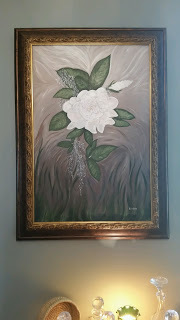
Published on June 17, 2015 14:10

